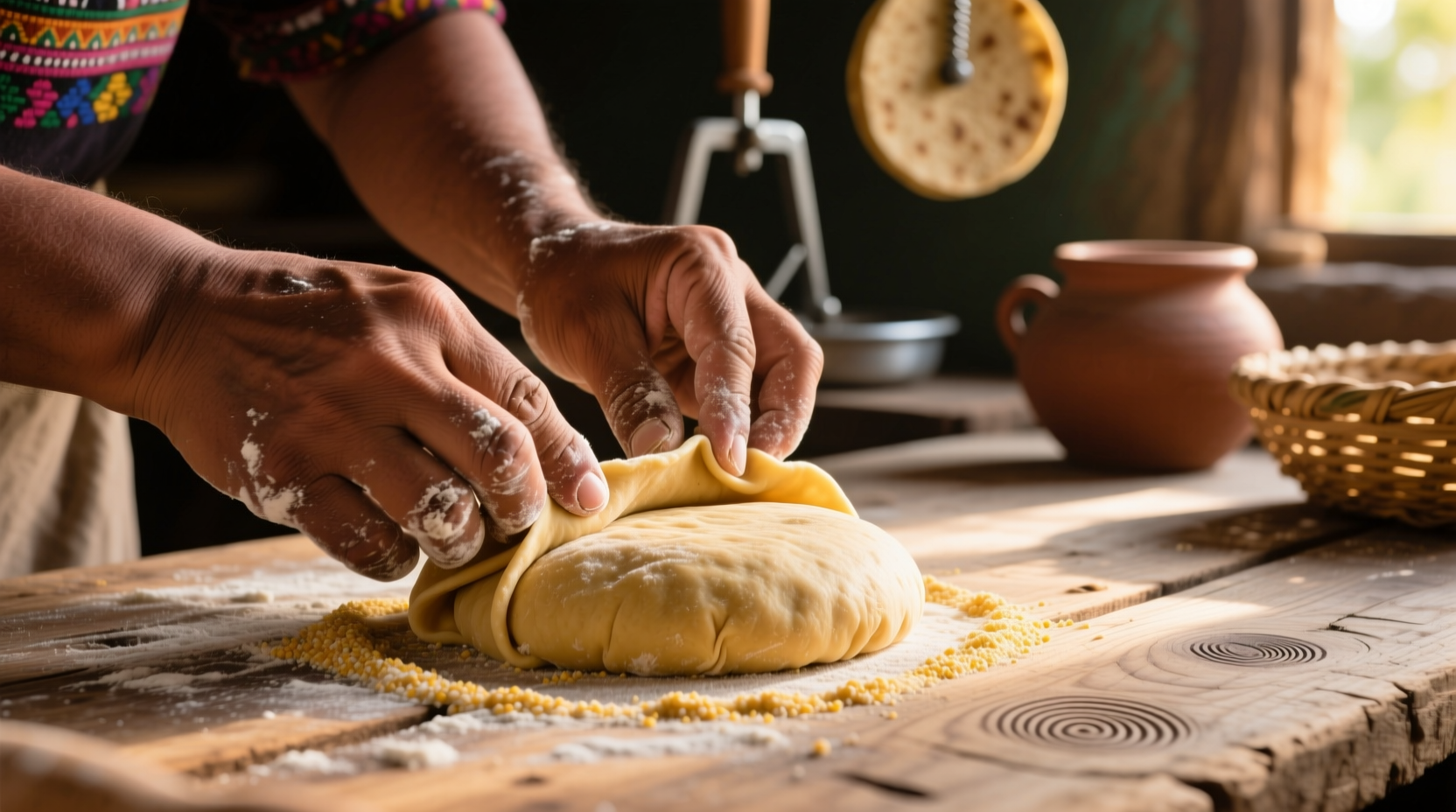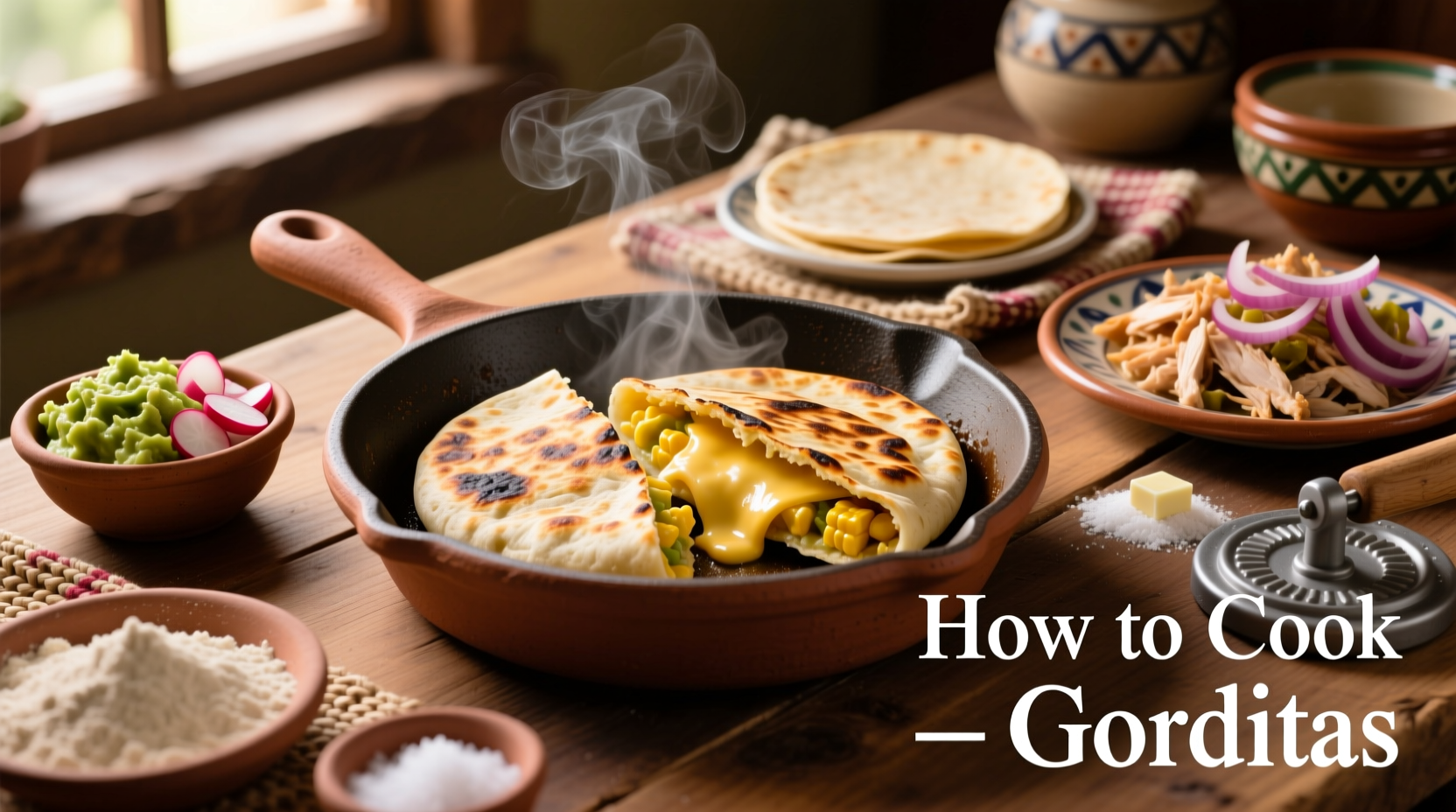What Makes Gorditas Different From Other Mexican Street Food
Gorditas occupy a special place in Mexican culinary tradition with their distinctive thick, round masa cakes that form natural pockets for fillings. Unlike tacos or tortillas which are thin and pliable, gorditas have a unique puffed structure that creates a perfect vessel for savory fillings. Originating from central Mexico, these "little fat ones" (as their name suggests) have evolved across regions with variations in thickness, cooking methods, and fillings.
Evolution of Gorditas Through Mexican Culinary History
| Time Period | Development | Regional Significance |
|---|---|---|
| Pre-Hispanic Era | Early masa cakes made from nixtamalized corn | Central Mexico indigenous communities |
| Colonial Period | Introduction of lard and new fillings | Spanish influence on preparation methods |
| 19th Century | Distinct regional variations emerge | Northern Mexico develops thicker versions |
| Modern Era | Street food popularity worldwide | Traditional recipes preserved alongside creative variations |
Essential Ingredients for Authentic Gorditas
The beauty of gorditas lies in their simplicity. You only need a handful of ingredients, but each plays a crucial role in achieving that perfect texture and flavor. Masa harina (not regular cornmeal) is essential - this specially treated corn flour has been through the nixtamalization process that gives masa its distinctive flavor and binding properties.
For beginners learning how to cook gorditas from scratch, here's what you'll need:
- 2 cups masa harina (preferably Maseca brand)
- 1 1/4 to 1 1/2 cups warm water (adjust as needed)
- 1/2 teaspoon salt
- 2 tablespoons vegetable shortening or lard (essential for pliability)
- Optional: 1/4 teaspoon baking powder for extra puffiness
When preparing traditional gordita recipes for beginners, remember that water temperature and amount are critical. The water should be warm but not hot - about 110°F (43°C). Too hot and it will cook the masa; too cold and the dough won't come together properly.

Mastering Gordita Dough Consistency
The single most important factor in how to make perfect gorditas every time is achieving the right dough consistency. Your masa should feel like soft playdough - smooth, pliable, and slightly moist but not sticky. Many beginners struggle with gordita dough that's either too dry (cracks when shaped) or too wet (sticks to hands).
Here's the professional technique Maya Gonzalez recommends after years of studying Mexican culinary traditions:
- Mix masa harina, salt, and baking powder in a bowl
- Rub shortening into dry ingredients until incorporated
- Gradually add warm water, 1/4 cup at a time
- Knead gently for 2-3 minutes until smooth
- Cover with damp cloth and rest for 15 minutes
After resting, perform the squeeze test: take a small piece of dough and squeeze it in your palm. If it holds its shape without cracking or oozing moisture, you've achieved perfect gordita dough consistency.
| Dough Issue | Problem | Solution |
|---|---|---|
| Dough cracks when shaping | Too dry | Add water 1 teaspoon at a time |
| Dough sticks to hands | Too wet | Add masa harina 1 tablespoon at a time |
| Gorditas break apart when filling | Insufficient shortening | Add 1-2 tsp more shortening next time |
| Dough feels gritty | Not enough kneading | Knead 1-2 minutes longer |
Shaping and Cooking Techniques for Perfect Gorditas
Now that you've mastered how to prepare gordita masa properly, let's cover the shaping and cooking process. This is where many home cooks make mistakes that prevent their gorditas from forming proper pockets.
Shaping Method That Guarantees Pocket Formation
Roll your dough into golf-ball sized portions (about 1.5 ounces each). Flatten between your palms to about 1/4-inch thickness. Using your thumb, gently press into the center while rotating the masa disc to create a thicker outer edge and thinner center - this is crucial for pocket formation during cooking.
Cooking Methods Compared
When learning how to cook gorditas on different surfaces, understand that each method produces slightly different results:
- Comal (traditional): Provides even heating, creates authentic flavor, best for authentic texture
- Cast iron skillet: Excellent alternative, creates beautiful browning, retains heat well
- Griddle: Good for cooking multiple gorditas at once, consistent temperature
- Electric griddle: Most temperature control, ideal for beginners learning how to make gorditas without burning them
Cook over medium heat (about 350°F/175°C). When bubbles form on the surface and the edges look set (about 2-3 minutes), flip. Cook until golden brown spots appear, then increase heat slightly and press gently with a spatula. This creates steam that separates the layers, forming the pocket. Total cooking time should be 6-8 minutes.
Filling and Serving Your Gorditas
The moment you've been waiting for! When learning how to fill gorditas properly without breaking them, follow these professional tips:
- Carefully slice a small opening along the edge with a knife
- Use a chopstick or small spoon to open the pocket wider
- Fill with slightly cooled ingredients to prevent steam from making the masa soggy
- Don't overfill - 2-3 tablespoons per gordita is ideal
Traditional fillings include:
- Shredded chicken or pork in salsa verde
- Refried beans with queso fresco
- Chicharrón prensado (pressed pork rinds)
- Simple cheese and nopales (cactus)
Troubleshooting Common Gordita Problems
Even experienced cooks encounter issues when preparing authentic gordita recipes at home. Here's how to solve the most common problems:
Why Your Gorditas Aren't Forming Proper Pockets
This is the #1 issue home cooks face when learning how to cook gorditas that actually open. The solution involves three factors:
- Dough consistency: Too dry = won't puff; too wet = won't hold shape
- Cooking temperature: Too low = no steam formation; too high = burns before pocket forms
- Shaping technique: Inadequate thicker outer rim prevents proper separation
Preventing Gorditas From Breaking When Filling
If your gorditas break when filling, you're likely making one of these mistakes:
- Cooking at too high temperature (creates brittle texture)
- Using insufficient shortening in the masa
- Trying to fill while too hot (wait 2-3 minutes to cool slightly)
- Using fillings with excessive liquid content
Storage and Reheating for Perfect Leftover Gorditas
One of the advantages of mastering how to make gorditas for meal prep is their excellent storage properties. Here's how to store and reheat properly:
- Room temperature: Store in airtight container for up to 2 days
- Refrigerated: Keep in sealed container for 5-7 days
- Freezer: Wrap individually and freeze for up to 3 months
For best reheating results when preparing how to cook gorditas ahead of time:
- Skillet method: Medium heat for 1-2 minutes per side (best texture)
- Steam method: Wrap in damp paper towel and microwave 20-30 seconds
- Comal: Traditional method that restores authentic texture
Expert Tips for Gordita Success
Based on Maya Gonzalez's decade of research into Mexican culinary traditions, here are professional insights for perfect gorditas:
- Add a teaspoon of epazote to your masa for authentic flavor (common in central Mexico)
- Rest your dough for exactly 15 minutes - less and it's too elastic, more and it dries out
- Use filtered water if your tap water has strong chlorine taste
- For extra flavor, substitute some water with chicken or vegetable broth
- Traditional Mexican cooks often add a pinch of achiote for color and earthy flavor
Frequently Asked Questions
Can I make gorditas without masa harina?
No, authentic gorditas require masa harina made from nixtamalized corn. Regular cornmeal won't bind properly and lacks the distinctive flavor. Maseca is the most widely available authentic brand in grocery stores.
Why aren't my gorditas forming pockets?
This usually happens due to incorrect dough consistency, improper shaping technique, or wrong cooking temperature. Ensure your dough has enough shortening, shape with a thicker outer rim, and cook over medium heat with a final press to create steam separation.
How thick should gorditas be before cooking?
Traditional gorditas should be about 1/4-inch thick with a slightly thicker outer edge (about 1/8-inch thicker than the center). This thickness difference is crucial for proper pocket formation during cooking.
Can I prepare gordita dough ahead of time?
Yes, you can prepare the dough up to 24 hours in advance. Store it covered with plastic wrap and a damp towel in the refrigerator. Bring to room temperature for 30 minutes before shaping, as cold dough won't form properly.
What's the difference between gorditas and sopes?
While both are masa-based, gorditas are thicker, form natural pockets when cooked, and are typically round. Sopes are smaller, have a raised edge but no pocket, and often feature decorative pinched edges. Gorditas originate from central Mexico while sopes are more common in southern regions.











 浙公网安备
33010002000092号
浙公网安备
33010002000092号 浙B2-20120091-4
浙B2-20120091-4